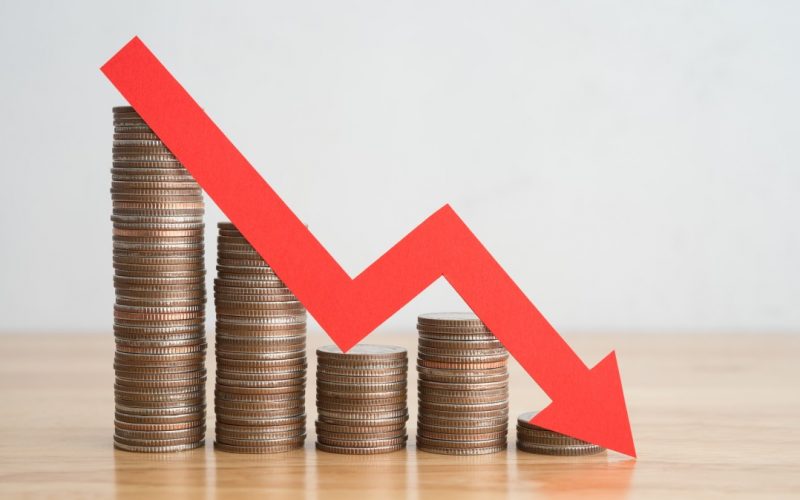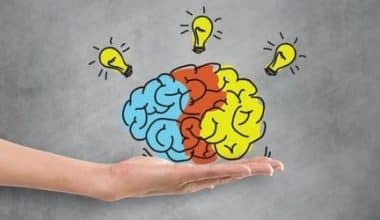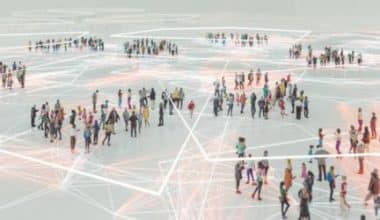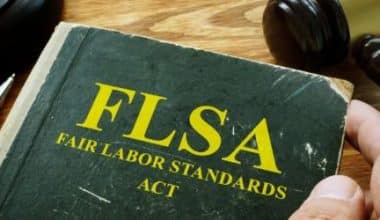The market trends and consumer confidence in a country, as well as its ability to create products and services, are important factors in maintaining economic stability. Economic recessions have occurred several times in history, impacting the financial well-being of people and businesses worldwide. Globally, US governments at all levels take precautions to forestall a recession in the economy, but these efforts aren’t always successful. In this piece, we will discuss the US economic recession, its causes, and how to prevent it.
What Is Economy Recession?
A recession in the economy occurs when a country’s economic activity deteriorates for more than two quarters in succession. The National Bureau of Economic Research (NBER) is in charge of recognizing and detailing the start and end dates of recessions in the United States.
However, a recession in the economy is normal and expected as part of the economic cycle; it serves to curb wasteful spending and is therefore desirable. Recessions are characterized by a significant disruption in the cycle of the economy, as seen by a drop in sales, an increase in the unemployment rate, and a decrease in economic output.
Understanding Economy Recession
Most economies have expanded steadily since the Industrial Revolution, and economic setbacks are the exception rather than the rule. According to the International Monetary Fund (IMF), there were 122 recessions in 21 major economies between 1960 and 2007, or about 10% of the time.
In modern times, the economic recession has been shorter and less severe.
Recessions can have a snowball effect, with falling output and employment rates feeding on themselves. For instance, if demand from customers is down, businesses may have to lay off workers, which in turn reduces consumers’ disposable income and further dampens demand.
In a similar vein, the bear markets that sometimes accompany recessions can have the opposite impact, abruptly making individuals less rich and further reducing expenditure.
Governments throughout the world have instituted fiscal and monetary measures since the Great Depression to mitigate the effects of a recession. 45 Some of these stabilizing factors operate on autopilot like unemployment insurance paying out to people who have lost their jobs. To take other measures, such as lowering interest rates to encourage investment, requires taking concrete steps. Read RECESSION: What It Means, Examples & What to Do During Recession.
Who Determines That an Economy Is in a Recession?
The NBER determines if the US economy is officially in a recession. “Traditionally, we define a recession as a broad and persistent decline in economic activity,” the National Bureau of Economic Research (NBER) explains.
The NBER considers many indicators, including industrial output, employment rates, personal income, and more, when making its determination as to whether or not a recession is occurring.
On the other hand, the NBER stresses that “there is no fixed rule about what measures contribute information to the process or how they are weighted in our decisions.” That means the criteria it uses to determine if a recession has occurred could evolve.
The NBER does not use a specific time frame to determine if a recession in an economy is occurring. It holds off on deciding until it has amassed adequate evidence.
Indicators of a Recession in an Economy
Here are some indicators of a recession in an economy.
- Real income. Personal income is deflated by the rate of inflation and social security benefits, including welfare payments, are subtracted out to get at a measure of real income. Falling real income lowers the standard of living.
- Gross Domestic Product (GDP). After accounting for price inflation, real GDP is the total value created by an economy (via products and services produced) during a specified time period. A decline in productivity, as indicated by a negative real GDP, is alarming.
- Employment. Unemployment is a lagging indicator since it shows up after the fact. Instead of forecasting a recession, it often verifies that an economy will transition into recession. Unemployment rates nearing 6 percent of the labor force are typically seen as concerning.
- Manufacturing. Factoring in exports, imports, and trade deficits (or surpluses) with other countries, the manufacturing sector is an excellent indicator of an economy’s robustness and ability to meet its own needs.
- Wholesale/Retail. Products’ success in the market can be evaluated by tracking their wholesale and retail sales alongside their inflation-adjusted counterparts.
What Are 5 Causes of a Recession?
Understanding some of the elements that may lead to recessions might be helpful, even if it isn’t always feasible to pinpoint the exact reasons for a recession.
#1. Financial/Nominal Factors
Over-extension of credit during growth periods is fundamental to a recession, according to the monetarist school of economics. Inadequate money supply and credit availability worsen the problem in the early stages of a slowdown.
Furthermore, interest rates and the interdependence of various commodities, for example, are two examples of the many monetary and real elements that are highly correlated. Since interest rates and other forms of monetary policy implicitly account for institutional reactions to expected slowdowns, the relationship is not obvious.
The benchmark interest rate is a common financial signal of an impending recession. For instance, in the 18 months before each of the last seven financial crises in the United States, the Treasury yield curve inverted. Falling stock prices over time are another indicator of gloomier future predictions.
#2. Existing Factors
A recession can be triggered by an abrupt change in external economic conditions and structural alterations. The Real Business Cycle Theory provides an explanation for this phenomenon by positing that a recession is the rational response of a market participant to unexpected or unfavorable shocks.
Crude oil-importing economies, for instance, can be negatively affected by a rapid increase in oil prices caused by escalating geopolitical tensions. Economies that have a lot of people working in low-skilled jobs may be hit particularly hard by innovative technologies that lead to factory automation.
#3. Psychological Factors
A state of excessive thrill and overexposure to risky capital during a period of economic expansion are both examples of psychological issues. At least in part, the Global Financial Crisis of 2008 was caused by irresponsible speculation, which led to the building of a bubble in the housing market in the United States. The general negativity towards the market might also be attributed to psychological causes, despite the fact that this negativity is not supported by the actual economy.
#4. Technological Change
There may be an adjustment period in the near term when new technological advances are implemented, despite the fact that such inventions tend to boost productivity and be beneficial to the economy over the long term. The 19th century saw a surge of technological advancements that reduced the need for manual work. The Industrial Revolution rendered whole occupations irrelevant, which contributed to economic downturns and difficult times. Some contemporary economists are concerned that artificial intelligence (AI) and robots may bring about recessions as a result of the elimination of whole job sectors.
#5. Asset Bubbles
When financial decisions are governed by feelings rather than logic, negative consequences for the economy are almost certain to follow. When the economy is doing well, some investors may get overly enthusiastic. Former Federal Reserve Chair Alan Greenspan is credited with coining the phrase “irrational exuberance” to describe this pattern of behavior when he was explaining the enormous gains seen in the stock market in the late 1990s. Irrational exuberance is what causes bubbles to form in markets like the stock market or the real estate market. When these bubbles burst, the market might crash, which can lead to a recession in the economy.
Who Benefits From a Recession?
It is much simpler than you might believe to use up all of your money during a period of economic hardship. A recession is stressful, but there are ways to make the best of the situation. Because rising interest rates almost always go hand in hand with economic downturns, now is an excellent moment to increase the amount of money held in interest-bearing savings, money market, individual retirement account (IRA), or certificate of deposit (CD) accounts.
If an account is time-based, choosing a shorter period rather than a longer term should be more helpful because rates tend to fall back down when a recession is reported to be ended. This is typically the case when an account has a constant interest rate; however, an account with a variable interest rate could not provide the same benefit.
Here is a list of the people who benefit the most financially from a recession.
#1. Borrowers Who Use Repo Agreements to Get Short-Term Loans
Unique banking products that pay greater interest are available to more than just individual users. Two new commercial banking options are now available from Altabank.
A REPO Account is the second type of account used by businesses. For companies that routinely keep sizable sums in the bank, a sweep account known as a REPO account may be the best option.
How it works is as follows: each night, any overdrafts from a customer’s operational account are “swept” into a separate REPO account, where they are used to make purchases of government securities, which are then sold and repurchased at a profit the following morning.
Interest is paid on the whole amount in the REPO account, which includes the sweep amount plus any profits made on the securities purchased, which means that customers earn interest on the total money in the account.
#2. Investors That Use a Premium Money Market Account
Some banks, following the lead of CDs, have begun offering a money market account with premium interest rates. When compared to traditional savings accounts, money market accounts often give account holders more convenient access to their money. While the number of withdrawals allowed from a standard savings account is set in stone, money market accounts typically allow for more withdrawals and account transfers.
With a minimum daily value of $5,000, Altabank’s premier money market account offers up to twice the interest rate per deposit amount as the bank’s basic money market account. Therefore, account holders not only enjoy more interest but also greater convenience in terms of when and how they can access their money.
#3. Those That Profit From Current Low CD Interest Rates
A CD is one kind of time deposit account. A certificate of deposit (CD) is a form of investment account that accumulates interest over a certain period of time. Most CDs offer greater interest rates than regular savings accounts because of the requirement that the money in the CD not be touched during the term.
To encourage clients to take advantage of current higher interest rates, banks are promoting new CDs with shorter durations. The annual percentage yield (APY) rate1 on a 13-month CD at Altabank is only one example. If a client has money to invest for a year or more, they should look into certificates of deposit (CDs) or talk to their bank.
US Economy Recession
In spite of concerns that there will be a recession in 2023, the economy of the US continues to demonstrate its resilience thus far. According to the latest GDP data, the economy’s first-quarter growth rate was revised up to 2% from 1%.
Since 2021, when the annual growth rate of 5.9% was recorded for the nation’s economy, which was the greatest pace of expansion in a calendar year since 1984, the economy has unmistakably slowed down. In 2022, the expansion of GDP was much more subdued, coming in at just 2.1%. Concerns that a recession may be on the horizon have not been realized as of yet due to the fact that the economy has continued its previous rate of expansion in the first quarter of 2023.
While GDP growth has slowed, “It’s continued that may allow the economy to maintain modestly positive growth this year,” says Rob Haworth, senior investment strategy director at U.S. Bank Wealth Management. “While the likelihood of a recession has not been eliminated, the timing of any recession appears to have been pushed out” due to the positive GDP statistics.
But if the economy does enter a recession in 2023, experts predict it won’t be too bad. According to U.S. Bank’s chief investment officer Eric Freedman, “Our view is that we’re less concerned with how deep a potential recession is.” If it does happen, the length of time it lasts is more of a problem for us. Possible economic stagnation in the United States and Europe in 2023.
The continues to show low unemployment (3.7% in May) and solid job creation, which are contra signs of a recession. Furthermore, the number of available jobs is much exceeded by the number of competent candidates seeking employment.
Effects of Recession
Many people in the economy won’t feel the pinch of recession at all. It may seem like business as usual, but the ripple effects will be felt by everyone. There’s no guarantee that these effects will materialize until well after the recession has ended. For instance, the Great Recession of 2008 had far-reaching consequences that are still being felt today. It aided in the ballooning of the money supply and the widening of fiscal deficits. For many years afterward, austerity measures were implemented throughout Europe, resulting in a reduction in public service provision.
#1. Inadequate Budget
When the economy is in a recession, many people lose their jobs because of falling aggregate demand. With more people out of work, fewer people are paying payroll taxes. Workers will have less money to spend on goods, leading to less sales tax revenue for the government.
Unemployment benefits are another area where welfare states tend to spend more money. As a result, overall expenditure rises while income declines. A budget deficit occurs when final government spending exceeds revenue collection.
#2. Insolvency of a Business
It is common practice to point to a decline in aggregate demand as a root cause of economic downturns. Businesses see fewer customers and lower sales as a result of a general drop in economic demand. This places heavy price pressure on enterprises, as it may prohibit some from enjoying the same economies of scale as others, leading to higher unit prices.
While the company is selling fewer products, it still must cover fixed expenses like rent, which have not decreased in price despite the decline in the volume of sales. If a company cannot withstand such price fluctuations, it will eventually fail.
#3. Price Declines in Assets
When a nation experiences a recession in its economy, the value of assets like real estate and stocks lowers. Investors and shoppers alike become fearful as job losses, declining profitability, failing enterprises, and a general decrease in discretionary money send shockwaves through the economy.
The recession-induced uncertainty impacts asset prices. When an asset’s value drops precipitously, investors and buyers alike begin to wonder what it’s really worth and when the decline will end. As a result, demand drops and the selling frenzy escalates since fewer people are willing to buy when they know the price could decrease by another 30 percent. Prices won’t settle down until people start believing in them again.
#4. Negative Interest Rates
Reduced demand in the economy is a hallmark of a recession. This indicates a decline in demand from both consumers and corporations. Businesses will need to cut back on output if consumer demand continues to decline. The result is a reduced workforce. Additionally, they are discouraged from investing in new machinery and equipment because of the unpredictability of future demand.
One of the monetary tools central banks employ to try to promote aggregate demand is a reduction in interest rates. Making borrowing money less expensive encourages people and companies to move through with their purchase decisions. A drop in interest rates could save a consumer as much as fifty thousand dollars when they decide to relocate. Another option is to spend the extra $20,000 on a more efficient machine.
#5. Unemployment
Recessions almost always accompany high unemployment rates. The rationale for this is that stable employment means that more people are contributing to the economy by working. When those positions become obsolete, the associated economic activity disappears. Falling economic demand, for a variety of reasons, is fueling this trend. However, less demand equals less work for the people who make those goods and services.
How Can We Prevent Recession?
When demand from any sector of the economy (companies, consumers, the government, or even other countries) falls, the economy experiences a recession. Therefore, the most efficient remedy will be dependent on pinpointing the precise reason for the economic downturn.
Tax cuts could be beneficial if consumers’ spending has slowed. As a result, they’ll have more disposable income to spend and boost the economy. Another possibility is that lower interest rates are needed to alleviate the debt load if corporate investment is slowing down. Here are some ways we can prevent a recession.
#1. Tax Reduction
Tax cuts by governments typically increase the deficit as a result of their spending decisions. When tax revenue decreases but government spending remains constant, the result is an overall benefit to the economy. While this may raise the deficit, it does boost spending by giving consumers more money to spend.
A person’s marginal propensity to consume determines how much of a tax cut they will actually benefit from. That is, how much of that money is expected to be spent locally vs nationally or internationally? Customers may blow their entire tax refund on new purchases if their tendency to shop is high. That increases the need for goods and services, which boosts the economy and creates jobs for more people.
#2. A Rise in Public Expenditures
Government spending contributes to GDP, thus any increase there would boost the economy as a whole. However, there may be repercussions along the road, such as higher prices or tax increases. Both of which can significantly dampen economic expansion.
Thus, a rise in government spending can provide a considerable boost to the economy. Jobs created by the government and money invested in infrastructure both put more cash in the hands of workers, who in turn spend it, so stimulating the economy. At the same time, the government saves money with these programs because it doesn’t have to provide welfare payments to the people it hires. Since the government is now providing an income rather than welfare, the net cost to the government is decreasing.
#3. Easy Money Policy
The goal of quantitative easing by most central banks is to liquidate the credit markets, making it simpler for financial institutions to lend money. By purchasing government debt from banks, the central bank frees up those institutions to make loans to individuals and companies. Another option is for the institutions to purchase newly issued government debt if the government decides to increase its borrowing.
There are a few ways banks can try to move new money, but none of them are certain to work. Because of the 2008 financial crisis, banks kept newly minted money in their reserve accounts. However, if the money resulting from quantitative easing makes its way to consumers, businesses, and perhaps even the government, economic growth may be boosted.
#4. Take Away Restrictions
Compliance with the numerous rules and laws affecting businesses today is a major challenge. Both businesses and customers bear the burden of the extra expenses caused by many. Reducing rules has two benefits: it reduces the cost of doing business, which in turn reduces prices for consumers.
There are also other rules to follow, such as labor legislation. Streamlining the process of hiring and firing employees gives organizations more motivation to begin investing in new workers. Higher participation in the labor force, which leads to higher economic output and consumer spending, could help revive the economy.
#5. Lessen the Rate of Interest
Reducing interest rates encourages savers to spend their money by putting more of their money in the hands of consumers and companies. As a result, mortgage holders with adjustable rates will have lower monthly outlays to service providers. Instead, they can contribute more to the economy by spending this newfound wealth.
A decrease in interest rates improves a company’s cash flow by reducing the amount of money it must repay lenders. Since it now costs less to take out a loan, businesses now have the chance to upgrade their machinery in light of the lowered interest rates.
Is It Possible to Predict a Recession?
No one can anticipate a recession with any degree of certainty. The United States has seen few recessions during the course of its history, which is cited as a contributing factor by the Labor Department. Economic researchers still may struggle to amass sufficient evidence to determine a precise cause of a recession.
Some economists use a phenomenon known as an inverted yield curve to foretell economic downturns. To put it another way, when short-term interest rates are higher than long-term ones, the yield curve has inverted. Also, read ARE WE HEADED FOR A RECESSION IN 2023? All You Should Know
It’s true that an inverted yield curve has been a precursor of recessions in the past, but there have also been instances where this hasn’t been the case. Thus, while it may serve as a possible precursor to a recession, it should not be seen as definitive evidence.
Conclusion
In conclusion, when economic activity drops significantly, broadly, and persistently, we call that a recession. Two consecutive quarters of negative growth in the gross domestic product (GDP) are often used as a rough indicator that the economy is in recession, however, many analysts prefer to use more nuanced metrics.
Recessions are identified by high unemployment rates. When consumer demand drops, businesses often reduce their workforce in order to save money. Those who lose their jobs often have to make sacrifices, such as reducing their own spending, which can have a negative impact on demand and ultimately lead to even more job losses.
Economy Recession FAQs
Is a recession bad for the economy?
While recessions certainly have their share of drawbacks, they sometimes serve as an essential reset for the markets. In the early stages of a recession, when interest rates are higher, saving profit, but in the latter stages, when interest rates are lower, homebuyers benefit.
What is the opposite of a recession in the economy?
A recession starts when the economy is at its peak and concludes when it is at its lowest point. The economy is growing between the two extremes. The economy is often in a state of growth, with recessions being unusual and usually short in duration.
Similar Articles
- HOUSING MARKET RECESSION: Impacts of Recession In 2023
- FINANCIAL STEPS TO TAKE DURING A RECESSION
- RECESSION PROOF INDUSTRIES: Top 12 Industries That Can Thrive During Recession
- Dynamic Programming: What Is It & All to Know?






